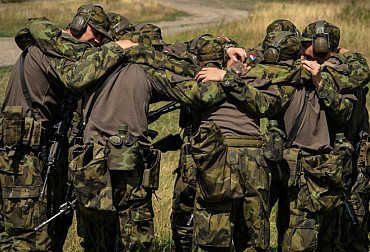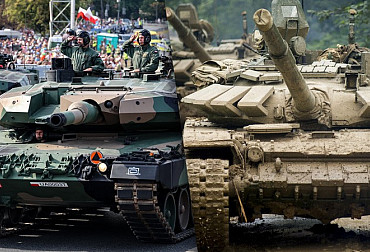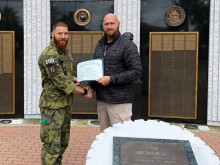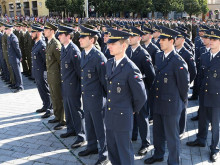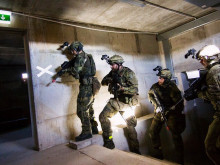Heron 1 marks a leap into the 21st century for the Czech Army
The conflict in Ukraine has significantly increased the pressure to modernise the Czech Army and significantly strengthen its capabilities to provide defence of the Czech Republic's territory and support allies in the event of a threat to NATO European countries. One of the progressive and effective technologies that have radically changed the face of the battlefield is remotely piloted flying systems (UAS), based on unmanned aerial vehicles (UAVs, otherwise known as drones).
The deployment of small tactical drones, notably Turkey's Bayraktar TB-2, in combat operations in Nagorno-Karabakh, Libya, and Ukraine has demonstrated their relatively good effectiveness, but has also exposed significant weaknesses – limited variability of use and high vulnerability in non-combat missions. In addition, the conflict in Ukraine has shown that both sides critically lack MALE-class UAVs (medium-altitude, long-range, survivable UAVs), which, with a payload weight of more than 1,000 kg and a payload capacity of around 400 kg, can be equipped with high-quality optoelectronic and radar systems and radio reconnaissance assets. With a range of around 1000 km and a flight endurance of 30-40 hours, these machines can continuously monitor enemy territory and identify a wide range of targets for artillery and missile systems. They can acquire and relay real-time information on the movement of troops, combat equipment, missile systems, the positions of radars and communication nodes, and other elements of the enemy's combat infrastructure without entering the enemy's air defence zone themselves.
MALE category UAVs can also conduct air attacks on ground targets if necessary, but their domain is continuous optronic and radar reconnaissance or electronic warfare. The Ministry of Defence's requirements for the most suitable UAVs for the Czech army have evolved over time, and with it its view of their future use, the required maximum take-off weight and payload. The final specification was agreed by several potential suppliers. The Heron 1 type was chosen, and it is already clear that the Ministry and the Army have made a good choice.
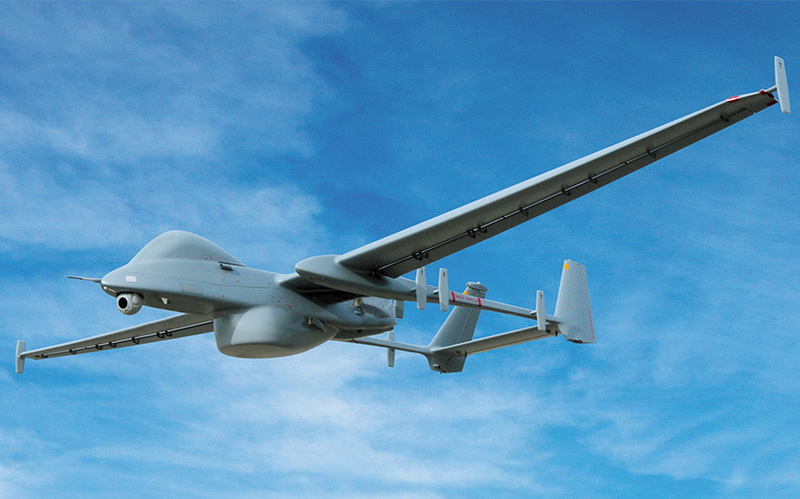 Picture: The requirements of the Ministry of Defence of the Czech Republic for the most suitable UAV for the Czech Army evolved gradually, finally the Heron 1 type was selected | IAI
Picture: The requirements of the Ministry of Defence of the Czech Republic for the most suitable UAV for the Czech Army evolved gradually, finally the Heron 1 type was selected | IAI
The future purchase of a complete Israeli system, which includes three Heron 1 UAVs with ground equipment and logistics support worth several billion crowns, obviously means significant support for the Czech defence industry, including the transfer of selected technologies to the Czech Republic. The fact that Heron 1 is manufactured by Israel Aerospace Industries (IAI), a company owned by the State of Israel, is also a significant advantage, which will significantly speed up, simplify and streamline international negotiations.
Recall that the Heron 1 UAV is part of a whole family of UAVs that includes a strategic variant – the turboprop Heron TP. A distinctive feature of the Heron 1 system is its modular architecture, which allows the flying platform to be quickly adapted to specific missions. It allows the UAV to be upgraded by simply integrating new advanced features and continuously upgrading sensors and other equipment. In addition, Heron 1 can, for example, assess weather conditions and determine the ideal way to land at an unfamiliar airport. The machine can thus land on any runway within range of the operator at the ground control centre and take off from that runway independently after refuelling and re-equipping.
The system includes a configurable Universal Control Station (UCS) for operators. The station complies with NATO STANAG 4586 ED-2 standard and allows to control all versions of Heron drones. It is based on a separate air-conditioned container that can be placed on a transport chassis according to the users' requirements. Thanks to its open architecture, communication protocols as well as its instant information sharing capability and integrated satellite communications (SATCOM), the Heron 1 drone can use a remote air and ground control system called Long Runner, which minimises the need for ground support from a remote operating base. To streamline the operators' work and increase the operational capabilities of the aircraft, the system uses artificial intelligence to enable efficient semi-automatic search, classification and recognition of objects and targets.
The acquisition of Heron 1 unmanned aerial vehicles will provide the Czech Republic with a highly effective means of reconnaissance and intelligence gathering. However, the Czech Army is not starting from scratch. It already has several types of UAVs in its arsenal. The largest of them, the US ScanEagle, was already used by Czech soldiers in Afghanistan several years ago. With a maximum take-off weight of 25 kg, a payload of 5 kg, a range of 6,000 m and a cruising speed of 55 km/h, the ScanEagle can operate up to 100 km from the operators' position and has a flight endurance of about 20 hours. It does not require a runway for deployment as it takes off from a pneumatic launcher and lands using a trapping system.
In contrast, Heron 1, with a take-off weight of 1,270 kg, a maximum speed of around 200 km/h, a range of almost 10,000 metres and an air endurance of up to 40 hours at a maximum operational range of up to 300 km from the control station (without using the satellite communication system), needs an airfield runway. Prostějov is home to the 533rd Unmanned Aircraft Systems Battalion, which was established three years ago as a specialised unit within the Czech Army for the operation and operational use of UAS within the 53rd Reconnaissance and Electronic Warfare Regiment. Therefore, it is logical that its operational base should be Přerov-Bochoř airport, which is permanently designated for the needs of the Ministry of Defence of the Czech Republic on the basis of a government decision from 2015.













